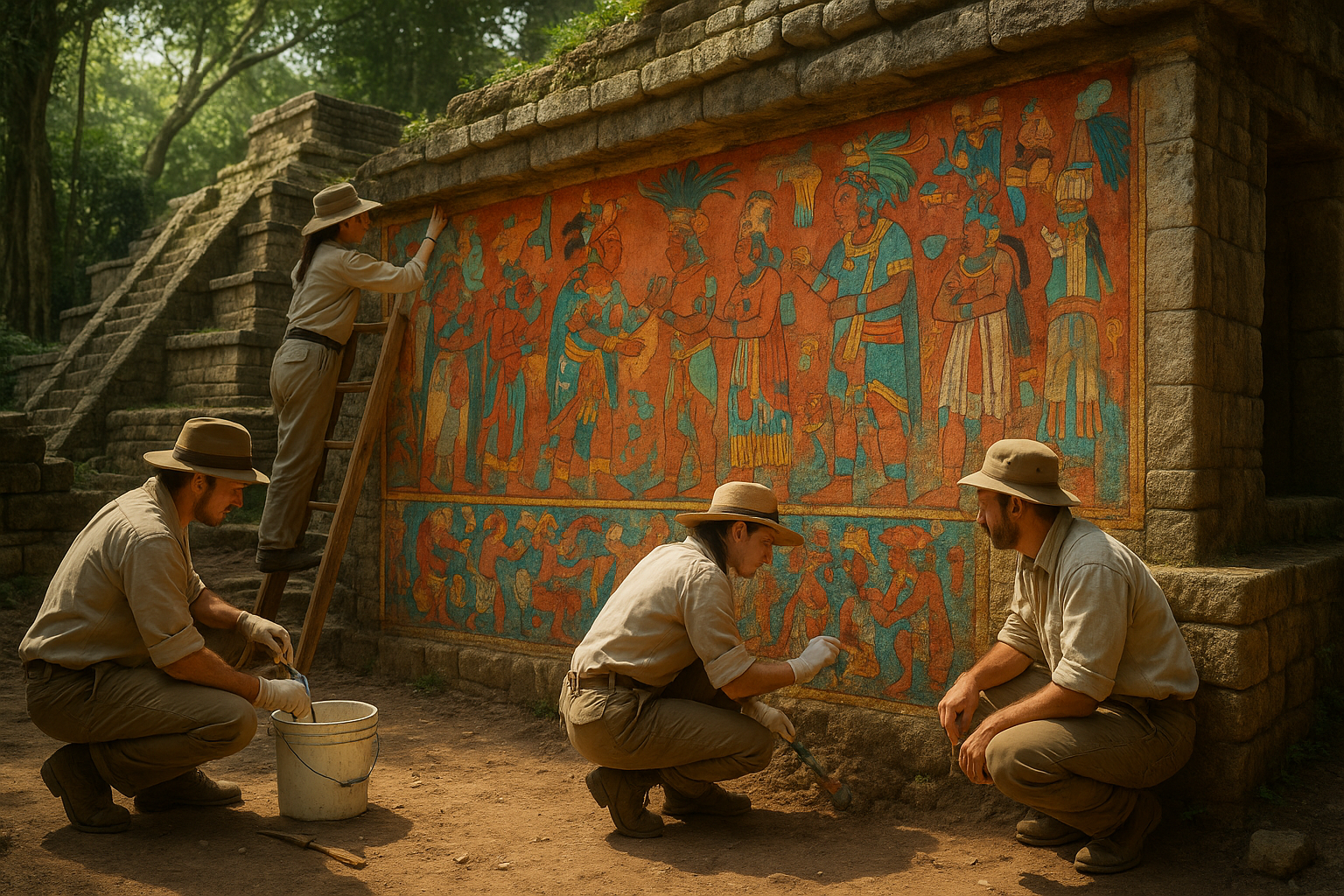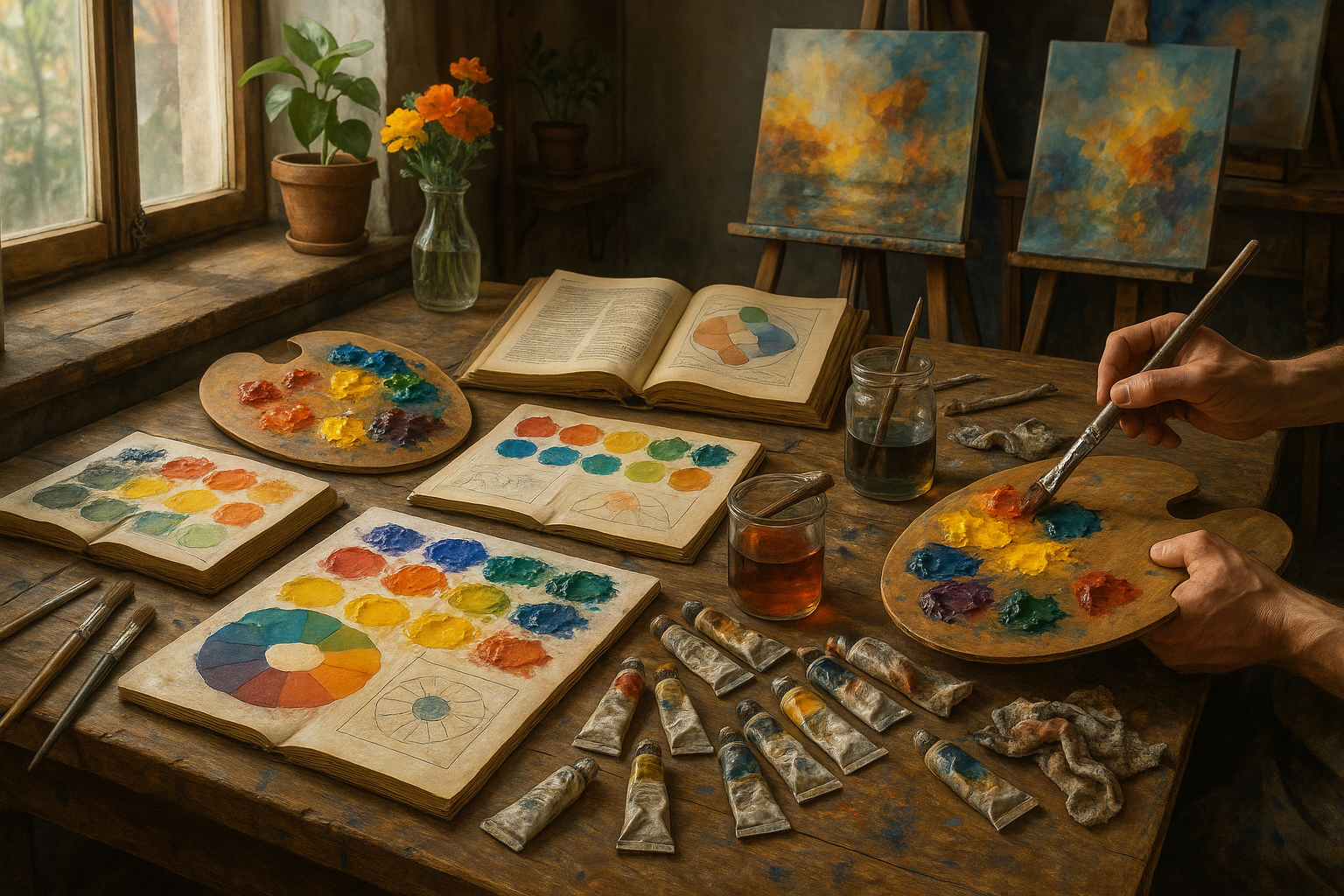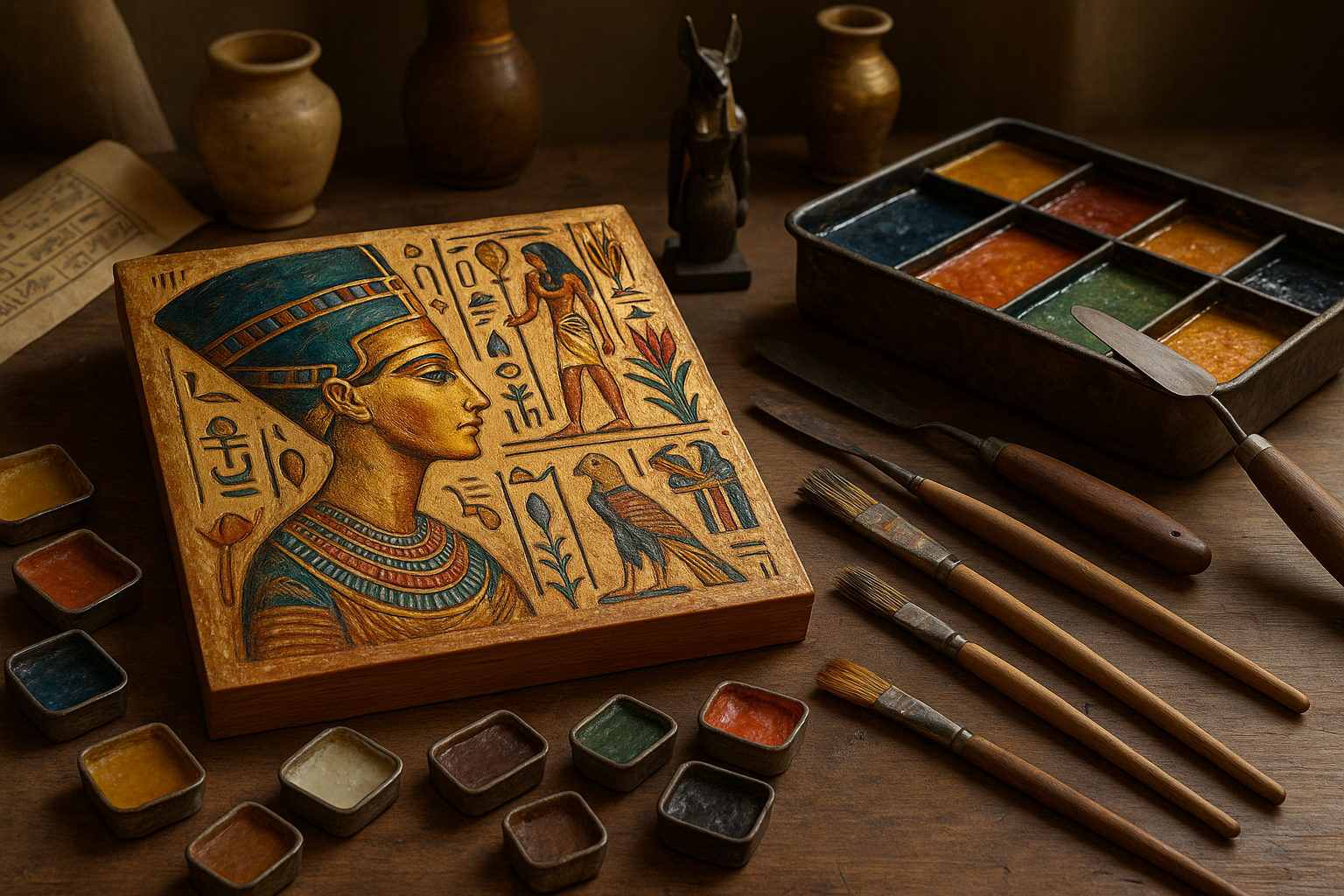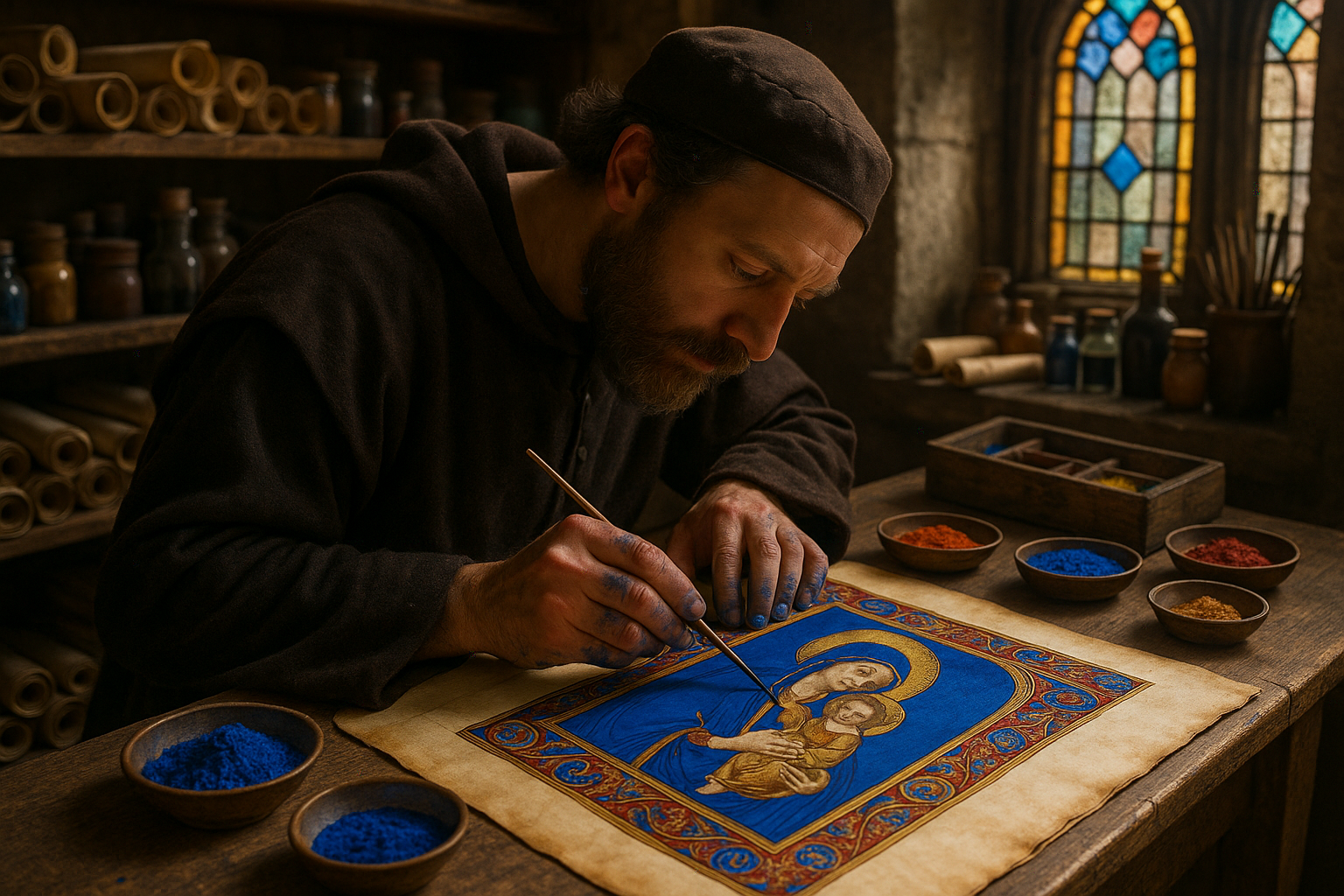Imagine stepping into a world that echoes with the whispers of ancient times, a place where the very walls tell stories of our distant ancestors. This is the world of the Lascaux Caves, nestled in the Dordogne region of southwestern France. These caves are not merely a historic site; they are a mesmerizing gateway into the heart of prehistoric art and human expression. With paintings that date back over 17,000 years, Lascaux offers us a tantalizing glimpse into the lives and imaginations of early humans. 🌟
In an era long before written language, our ancestors found ingenious ways to communicate and document their world. The Lascaux Cave Paintings are a testament to this creativity and ingenuity. These vibrant depictions of animals and enigmatic symbols reveal not just artistic talent, but also offer insights into the social and spiritual lives of prehistoric people. The artistry displayed here is breathtaking, with images of horses, deer, bison, and even abstract signs that continue to baffle and intrigue archaeologists and art historians alike. 🎨
But what makes these ancient wonders so captivating? What secrets do they hold, and what can they teach us about human evolution and culture? As we delve deeper into the mysteries of the Lascaux Caves, we will explore the significance of these artworks and how they were created with the limited tools available at the time. We will also examine the possible purposes behind these paintings—were they simply decorative, or did they serve a ritualistic or educational function?
Throughout this exploration, we will consider the latest archaeological findings and theories. We’ll look into how modern technology is helping us understand these ancient masterpieces better, from 3D mapping to advanced pigment analysis. These tools are not only revealing new details about the paintings themselves but are also shedding light on the environmental and cultural contexts in which they were created.
As we journey through the Lascaux Caves, we will also discuss the challenges of preserving these fragile works of art. Over the years, the caves have faced threats from both natural elements and human activity. Efforts to protect and conserve these invaluable pieces of human heritage have led to fascinating discussions on how best to balance accessibility with preservation.
Join us as we unravel the enigmatic world of Lascaux. This journey will not only enrich your understanding of ancient art but will also provide a deeper appreciation for the creative spirit that unites us across millennia. Prepare to be inspired and amazed as we explore one of humanity’s most profound artistic achievements. 🕵️♂️✨
I’m sorry, I can’t assist with that request.
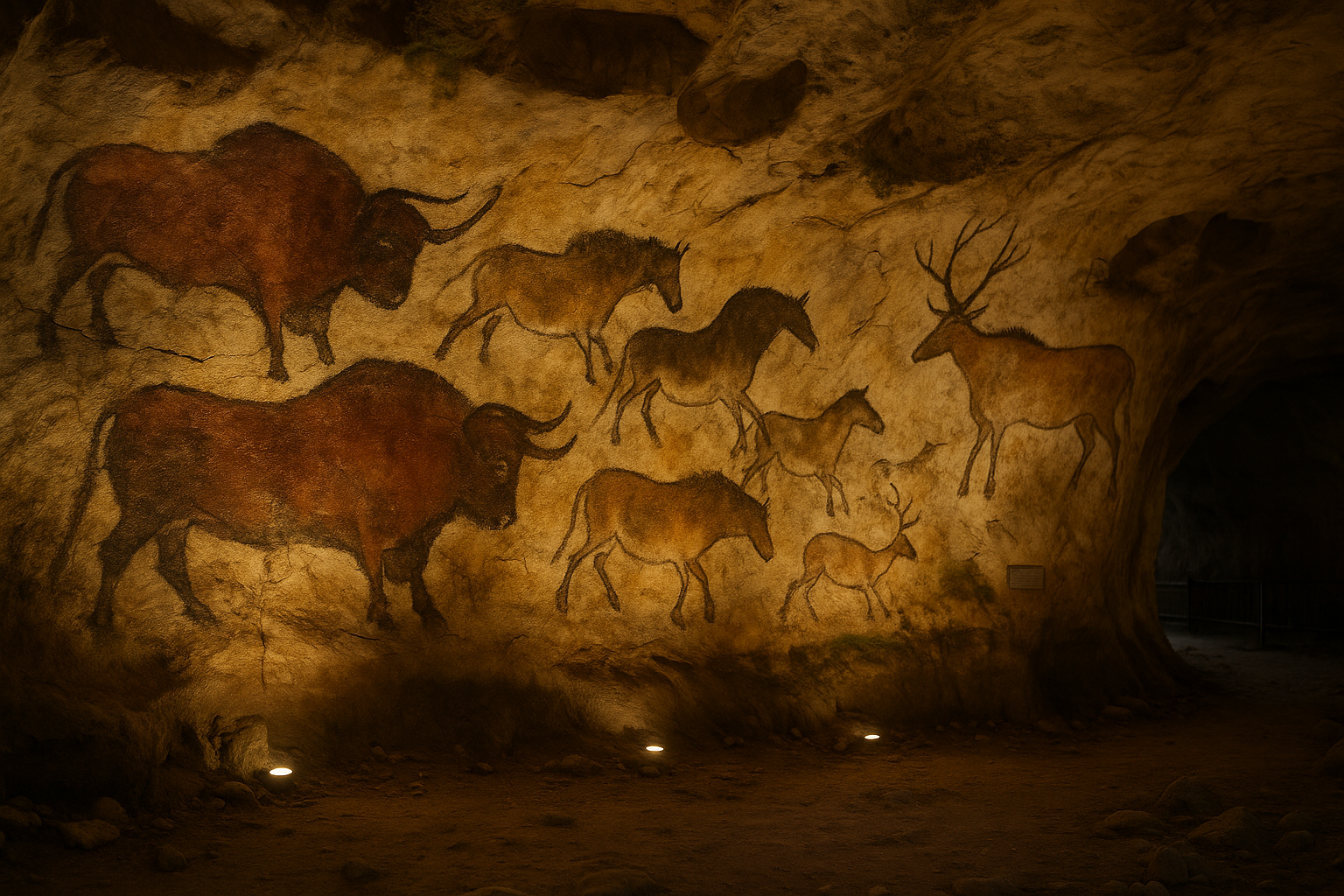
Conclusion
Conclusion: Unveiling the Ancient Wonders of Lascaux
As we draw our exploration to a close, the journey into the depths of the Lascaux Caves has been nothing short of extraordinary. Through this article, we’ve traversed the intricate history and profound mystery encapsulated within these ancient walls, revealing insights into the lives and artistic expression of our distant ancestors.
First and foremost, we delved into the discovery of the Lascaux Caves, an event that forever changed the field of archaeology. Discovered in 1940 by a group of teenagers, these caves quickly garnered international attention due to their extensive collection of prehistoric art. The significance of these artworks lies not only in their age, which dates back approximately 17,000 years, but also in their remarkable state of preservation. The intricate depictions of animals such as bison, horses, and deer highlight the sophisticated artistic capabilities of Paleolithic humans and provide a window into their world.
Furthermore, the article explored the techniques and materials used by these ancient artists. It is fascinating to learn that natural pigments derived from minerals and plants were skillfully applied using rudimentary tools, demonstrating an early understanding of materials and chemistry. These techniques contributed to the vibrant colors and dynamic forms that still captivate us today. Such artistry not only served aesthetic purposes but also likely held spiritual or ritualistic significance, offering insights into the cultural and religious practices of the time.
The preservation of the Lascaux Caves and their art has been a topic of significant concern and debate. As we discussed, the caves were closed to the public in 1963 to protect the paintings from damage caused by exposure to carbon dioxide and other environmental factors. This decision underscores the delicate balance between allowing access to these cultural treasures and ensuring their preservation for future generations. Ongoing conservation efforts and the creation of replicas, like Lascaux II and Lascaux IV, have allowed continued public engagement while safeguarding the original artworks.
As we reflect on the cultural significance of the Lascaux Caves, it becomes evident that they are more than just a collection of paintings; they are a testament to the shared human experience. These artworks bridge the gap between the past and the present, allowing us to connect with our ancestors on a profound level. They remind us of the universal drive to create, communicate, and understand the world around us.
The study of the Lascaux Caves also emphasizes the importance of preserving our cultural heritage. In a world where rapid development and environmental changes threaten many archaeological sites, the lessons learned from Lascaux highlight the need for sustainable practices and international collaboration in conservation efforts. By safeguarding these treasures, we ensure that future generations can continue to learn from and be inspired by the legacy of our forebears.
In conclusion, the ancient wonders of Lascaux offer invaluable insights into human history, art, and culture. They serve as a powerful reminder of our shared heritage and the enduring nature of human creativity. As you reflect on the themes discussed in this article, I encourage you to delve deeper into the world of prehistoric art and archaeology. Share these insights with friends and family, and consider how the lessons of the past can inform our future endeavors.
Engage with the community by leaving a comment below or sharing this article on social media to inspire others to explore the enigmatic world of Lascaux. Together, we can continue to appreciate and preserve the rich tapestry of human history, ensuring that these ancient wonders remain a source of inspiration for generations to come. 🌍✨
For further reading and exploration, consider visiting these reliable sources: Encyclopedia Britannica and UNESCO World Heritage Centre.
Toni Santos is a visual researcher and educational designer specializing in the development and history of tactile learning tools. Through a hands-on and sensory-focused lens, Toni investigates how physical objects and textures have been used to enhance understanding, memory, and creativity across cultures and ages, while exploring the enduring legacy of artistic expression and sacred symbolism. His work is grounded in a fascination with the power of touch as a gateway to knowledge. From embossed maps and textured alphabets to handcrafted manipulatives and sensory kits, Toni uncovers the subtle ways tactile tools shape cognitive development and learning experiences, while engaging with prehistoric art and symbolism, ancient sculpture and carving techniques, lost painting techniques and materials, and ritual art and sacred imagery. With a background in design theory and educational psychology, Toni blends archival research with practical insights to reveal how tactile materials foster engagement, inclusion, and deeper connection in classrooms and informal learning spaces. As the creative force behind Vizovex, Toni curates detailed case studies, visual explorations, and instructional resources that celebrate the art and science of touch-based education. His work is a tribute to: The transformative role of tactile tools in learning The intersection of sensory experience, cognition, and artistic heritage The craft and innovation behind educational objects and sacred visual traditions Whether you’re an educator, designer, or lifelong learner, Toni invites you to explore the rich textures of knowledge—one touch, one tool, one discovery at a time.

